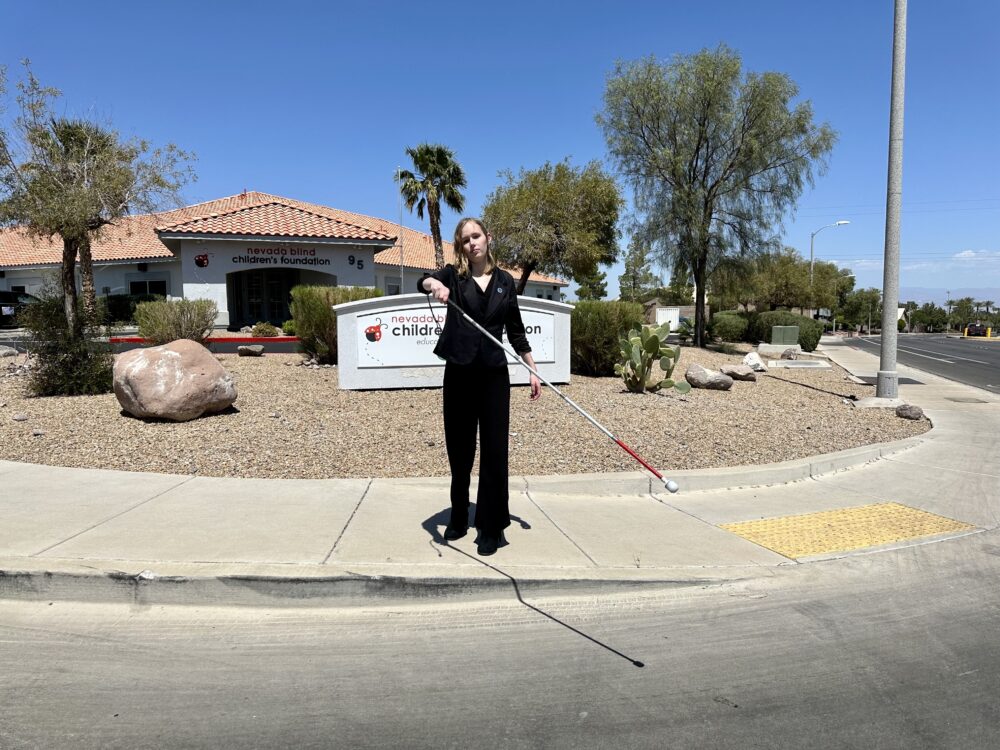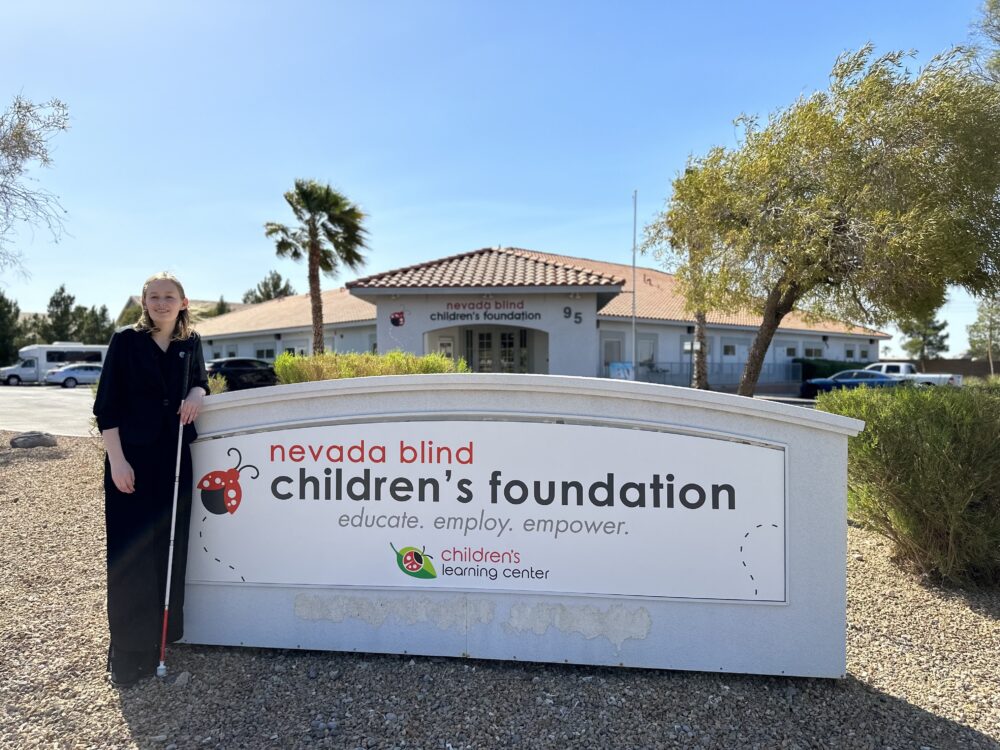Nevada Department of Motor Vehicles (DMV) and Nevada Blind Children’s Foundation (NBCF) are joining forces to educate drivers about White-Cane Law in the state, and upcoming changes to the Nevada DMV Driver Handbook.
NBCF Student Kaylynn Diebold has been working with the DMV and state legislature to make the roads and crosswalks safer by advocating for increased access to information regarding “flagging,” one of the many tools used by people who are blind or visually impaired to signal they are about to cross the street.

White-Cane Law helps make the roadways safer for pedestrians who are blind or visually impaired. While specific language can vary state by state, in general, they provide right-of-way to a blind or visually impaired person holding a white cane with a red shaft, or a guide dog, at all times. However, roadway safety is a two-way street, and the visually impaired community has developed a communication tool to help signal when they are about to cross the street. It is called “flagging”.

Flagging is a practice performed by some members of the blind and visually impaired community to alert drivers of their presence and intention to cross the street. While not every person who is blind or visually impaired will use flagging, there are several types of flagging drivers should be aware of:
- Cane flagging is when a person uses their cane and crosses their body and back in an exaggerated arch. (This method is the most taught in Nevada)
- Reversible step is when a person uses their cane and steps slightly forward as if crossing the street.
- Hand-up toward the driver is when the person uses their cane out directly in front while holding their left arm out in a stop motion to signal to the driver in front of them and behind.
If you see any of above actions taking place, you must yield until the pedestrian has completely crossed the street and is no longer in the crosswalk or on the road.

Bottom line: If you see a white cane, stop in your lane and give the pedestrian who is blind or visually impaired plenty of space to cross the street.
A result of Diebold’s advocacy efforts, the Nevada DMV will be expanding its educational materials on the White-Cane Law and flagging and adding a permanent question to the driver knowledge test for licensing. The updates will be made after the current legislative session ends in June.
Nevada law specifies that a blind person walking with a service animal or cane has the right-of-way over vehicles at all times:
NRS 484B.290 Right-of-way of person who is blind; penalty.
A person who is blind and who is on foot and using a service animal or carrying a cane or walking stick white in color, or white tipped with red, has the right-of-way when entering or when on a highway, street or road of this state. Any driver of a vehicle who approaches or encounters such a person shall yield the right-of-way, come to a full stop, if necessary, and take precautions before proceeding to avoid a crash or injury to the person. A person who violates this section is guilty of a civil infraction punishable pursuant to NRS 484A.703 to 484A.705, inclusive.
For additional information, dmv.nv.gov/media/whitecane

Leave a Comment